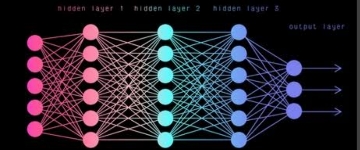What is a neural network?
A neural network is a method in artificial intelligence that teaches computers to process data in a way that is inspired by the human brain. It is a type of machine learning process, called deep learning, that uses interconnected nodes or neurons in a layered structure that resembles the human brain. It creates an adaptive system that computers use to learn from their mistakes and improve continuously. Thus, artificial neural networks attempt to solve complicated problems, like summarizing documents or recognizing faces, with greater accuracy. Neural networks can help computers make intelligent decisions with limited human assistance. This is because they can learn and model the relationships between input and output data that are nonlinear and complex. For instance, they can do the following tasks
What are neural networks used for?
How do neural networks work?
The human brain is the inspiration behind neural network architecture. Human brain cells, called neurons, form a complex, highly interconnected network and send electrical signals to each other to help humans process information. Similarly, an artificial neural network is made of artificial neurons that work together to solve a problem. Artificial neurons are software modules, called nodes, and artificial neural networks are software programs or algorithms that, at their core, use computing systems to solve mathematical calculations.
Input Layer:- A basic neural network has interconnected artificial neurons in three layers:
Information from the outside world enters the artificial neural network from the input layer. Input nodes process the data, analyze or categorize it, and pass it on to the next layer.
Hidden Layer :- Hidden layers take their input from the input layer or other hidden layers. Artificial neural networks can have a large number of hidden layers. Each hidden layer analyzes the output from the previous layer, processes it further, and passes it on to the next layer.
Output Layer :- The output layer gives the final result of all the data processing by the artificial neural network. It can have single or multiple nodes. For instance, if we have a binary (yes/no) classification problem, the output layer will have one output node, which will give the result as 1 or 0. However, if we have a multi-class classification problem, the output layer might consist of more than one output node.
Natural language -->

